
8 minute read
Change Is Happening






happening







Dirk Janssens, VIGAN, Belgium, discusses changing trends around the world and what they could mean for the bulk industry moving forward.


The world is changing fast. Not only changes in climate but also many other things: food habits, the appearance of different ethnicities on continents around the world, the economic situation of many countries, and the economic and strategic leadership amongst countries and continents. As we speak, the world order is changing. COVID-19 seems to have further increased this speed of change by creating an awareness of the strengths and the weaknesses of our world of today. Therefore, countries strive more and more to reduce their dependencies on third parties, especially for their needs in terms of nourishment.
Looking back, there was a time when a lot of wheat was milled in Europe and the flour made there was transported to Africa and other parts of the world for consumption. Nowadays the largest mills are to be found in Africa, Asia, and Latin America. The countries import wheat by Panamax ships for their own captive use as the milling industry has been concentrating over the last 15 years.
Although one might expect that many countries could opt for food crops that can be grown locally as well, food choices are not necessarily driven by those opportunities. The discovery of fossil fuels over the last 30+ years in many (sub) tropical countries around the


world has often motivated farmers to discontinue their activities, going for the fast track – selling their fertile lands for fuel exploitation purposes. As more and more households have both partners with jobs, the time spent on food preparation has reduced tremendously. The popularity of consuming snacks or other kinds of prepared meals is on the rise. This will also further stimulate the transport of the raw materials destined for their preparation.
Third world countries have increased their consumption of white meat, typically poultry meat. From importing fresh meat as the basis, trends now have moved on further to import fi nished compound feed and even more recently, feed mills have been built all around the world.
The expertise behind grain milling has spread worldwide through the willingness of expats to sell their experience wherever needed. The nutritional secrets in the making of quality feed have also travelled more recently and found their way to very distant parts of the world, whether it is pig or poultry farming. Also, feed produced for fi sh and shrimp farming has seen double digit growth fi gures lately. Countries like China, Thailand, Vietnam, and Bangladesh represent big markets for raw materials destined for this industry.
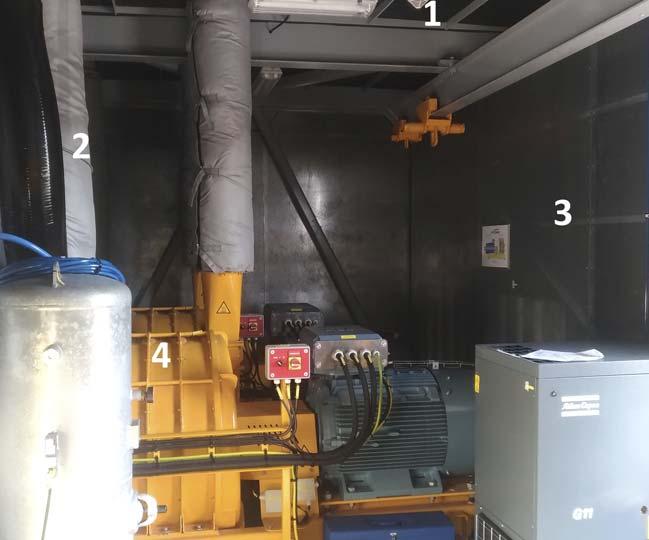
Figure 1. Isolation 1. 1. Roof insulation; 2. Inlet/outlet flexible insulation; 3. Complete machine room insulation with perforated plate; 4. Insulated turbines.
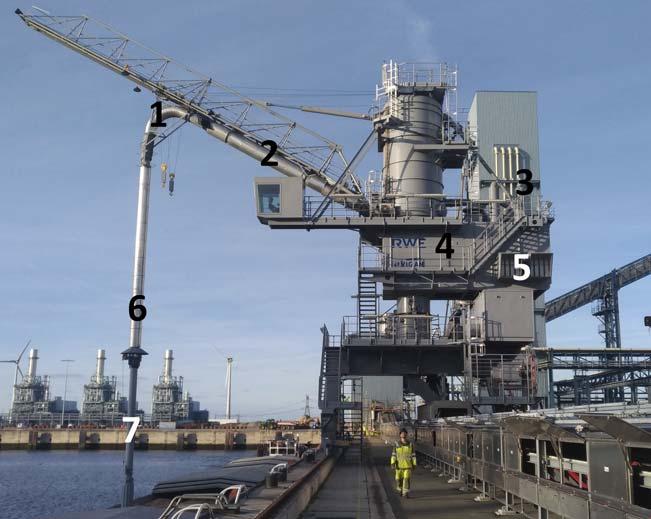
Figure 2. Isolation 2. 1. Insulated elbows flexible with noise cover; 2. Insulated horizontal pipe; 3. Oversized exhaust silencers; 4. Insulated machine room; 5. Inlet and outlet air silencers; 6. Vertical pipe and suction nozzle, insulated from the inside.
Transport via cargo is on the rise
All of these trends, together with increasing populations, means that the transport of cargo via bulk carriers has gone through the roof in the last decade. In addition, price pressure forces companies to group their purchasing power in order to get the best price deals on their raw materials. In flour milling, as in feed milling, the main cost of the fi nal product is determined by more than 80% of the cost of the raw materials. The only way to stay in the market is to increase the scale of the business in such a way that purchase cost is minimally affected. Bulk transport costs are directly related to the cost of the main raw materials worldwide such as wheat, corn, and soy. In addition, fertilizers and other non-organic cargo are transported via large vessels.
As well as these trends, genetics, farming techniques, and acquired knowledge have generated new world players in terms of agro bulk production. In a short period, Russia went from a generally net wheat importer to the largest single country wheat exporter. Recently, Brazil became an exporter of soybean, soon leaving the US far behind.
One can expect that new genetics and farming techniques will further improve the potential of countries and vast spaces that were not even considered less than 15 years ago. The production capacities and types of crop will of course depend on climate and geographical location. The means that transport of bulk will defi nitely increase further in the coming years.
Ship design
As ship sizes increase, so does the need for adapted loading and unloading systems. In order to minimise demurrage costs, required unloading and loading capacities are further increasing. Customers demand machines that are easy to use with a low cost-to-use. Moreover, when raw materials that are destined for the food or feed industry are loaded or unloaded, contamination becomes an issue. The need for closed and dedicated systems is obvious. On top of that, the impact on the environment has to be minimal: noise, dust emissions, and spillage are under severe control in most ports.
When it comes to unloading by pneumatic means, one can easily assume it is by far the way of unloading that meets the requirements of today. VIGAN unloaders consume 0.7 - 0.8 kWh/t unloaded, they have a completely closed suction circuit, the spare part cost equals €0.04/t
discharged, the fi lters used have permeability that is in line with the most stringent rules. So, it is not about dust being in the air, it is more about dust particles being reduced to a minimum.
Depending on the location, noise emissions are minimised: the turbines are embedded in a noise insulating coating, the cabins are delivered with acoustic panels, and the air exhaust systems are specially built and oriented to have minimal noise impact. Several of VIGAN’s unloaders are operating within urban areas without complaints from the surroundings.
The company’s unloaders also try to keep operators happy by creating a silent environment with agreeable working conditions, PLC steered systems, and cameras that allow minimal efforts for maximum effi ciency.
After building unloaders for the most demanding companies, VIGAN states that typically, the energy producing companies that increasingly opt for wood pellets as their fi ring substrate have given VIGAN a plus for the future. Reliability and safety are amongst the main priorities of those companies that deliver energy to the nation, whether it comes to operating 24/7, operating explosion proof, or being environmentally friendly. VIGAN ranks as a top choice for these clear requirements.
The company has therefore not neglected the implementation of these features into its standard equipment. It feels that customers all around the world have higher expectations when it comes to something that is often considered a basic handling, however this is not the case.
Unloading a ship means it was loaded somewhere else. As much as requirements can be defi ned for unloading, the same is true for loading. With one huge difference: loading is facilitated by gravity, unloading is not.
Technology-wise, unloading requires many more different techniques than loading. But the same rules apply when it comes to the environment (dust and noise), effi ciency, handling cost, and investment. In addition, specifi c systems exist to handle sensitive cargo with care, reduce falling speed to avoid dust emissions, and use fi lters to create pressure in the conveyor tunnels to avoid dust escaping. Also, the unloader needs to travel along the ship holds to reduce total loading time.
Conclusion
It has been thus determined that the complete handling of cargo requires many techniques, machines, and structures: silos, conveyors, elevators, drying systems, mills, vessels, and cleaning systems. Somewhere in between the farm and the fork, VIGAN intervenes, whether it is on a farm, a feed mill, next to a river, or in a port, the company keeps the cargo on the move to its fi nal destination, thereby respecting the quality and shape, the purity, the environment, and the wallets of its customers.
Power Player in Mining Gearboxes

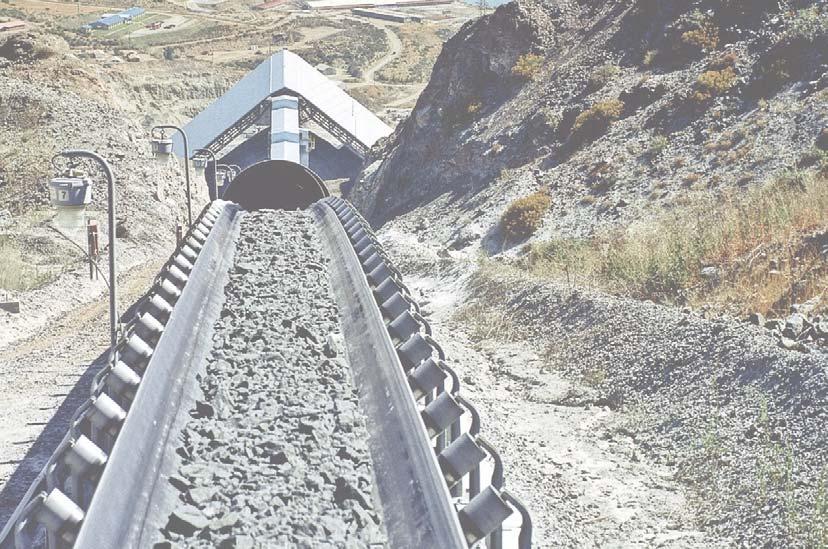

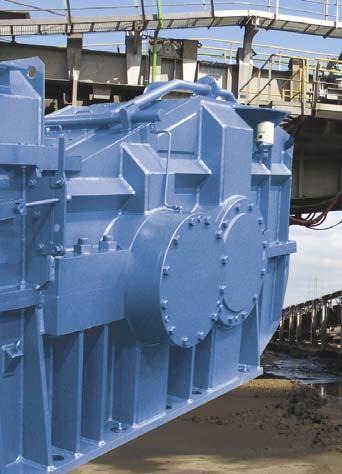
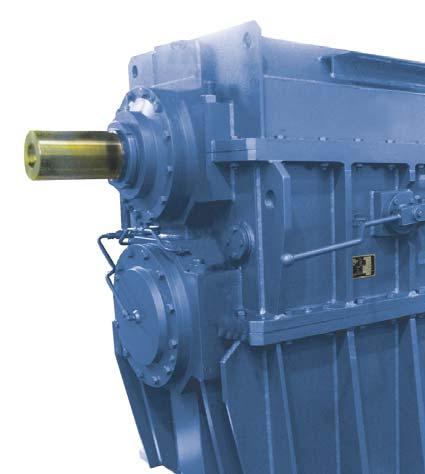
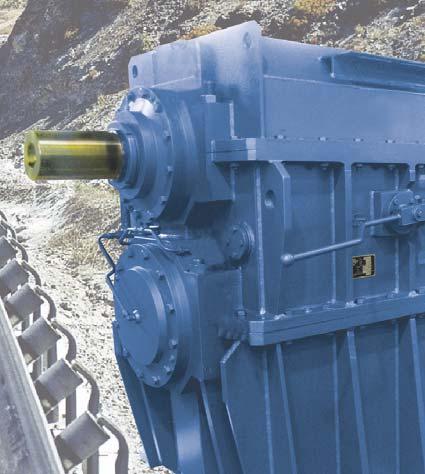
Kumera Gearboxes have represented the reliable power train solutions in Mining Conveyors in more than 100 years. Our engineering services are optimized gearbox solution to secure trouble-free operation of the conveying system. Kumera Getriebe GmbH Bonner Strasse 38 D-53842 Troisdorf-Spich Germany Tel.: +49 2241 988 – 0 www.kumera.com










